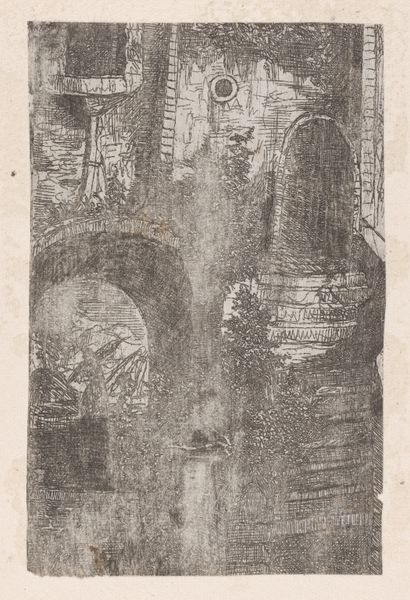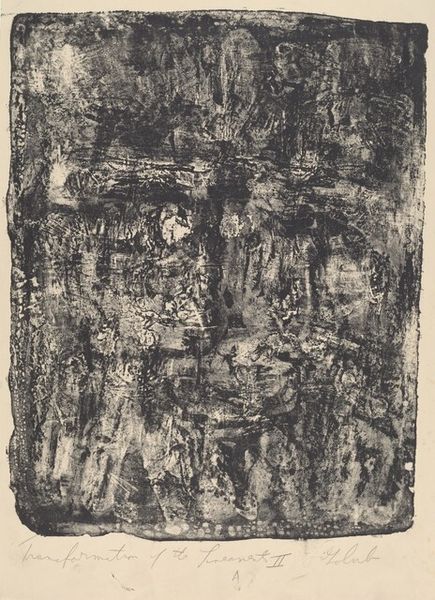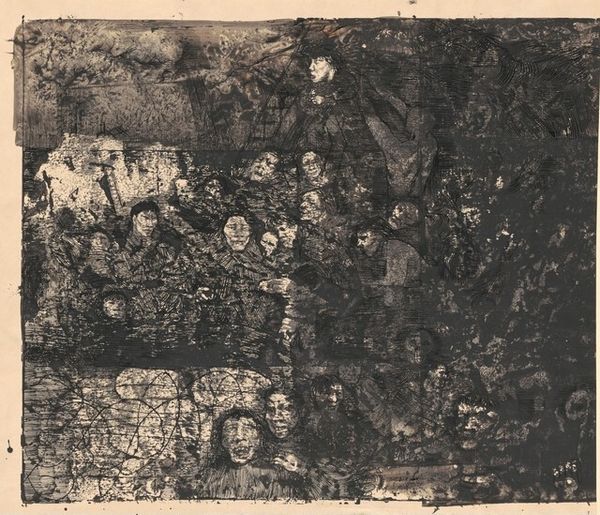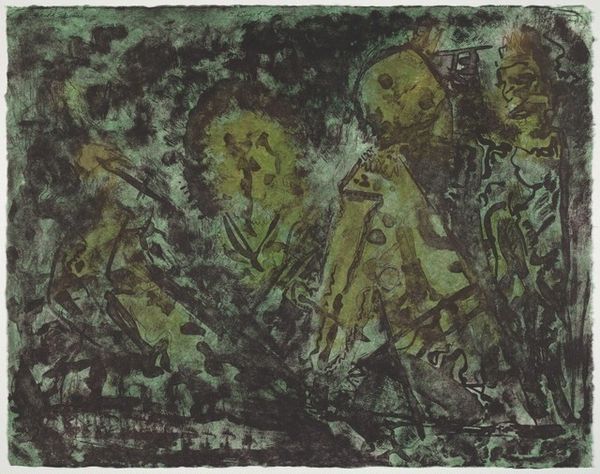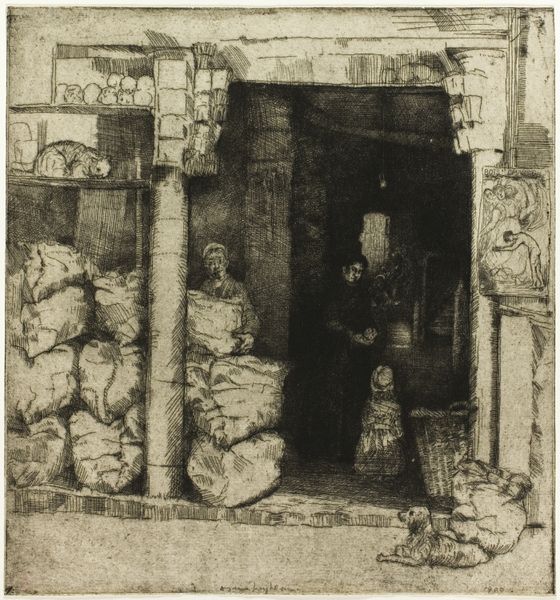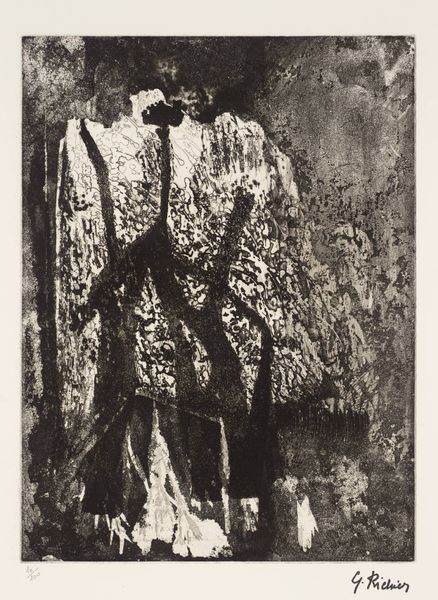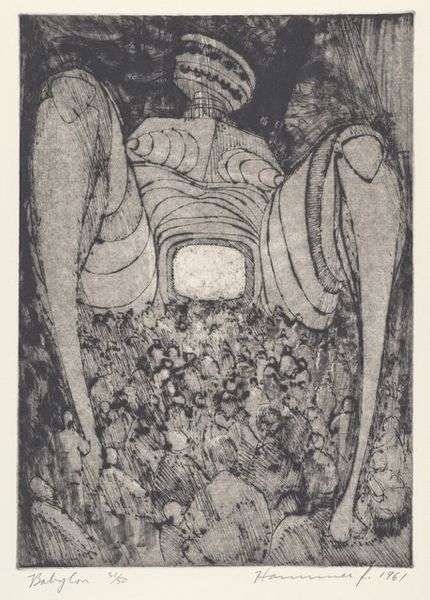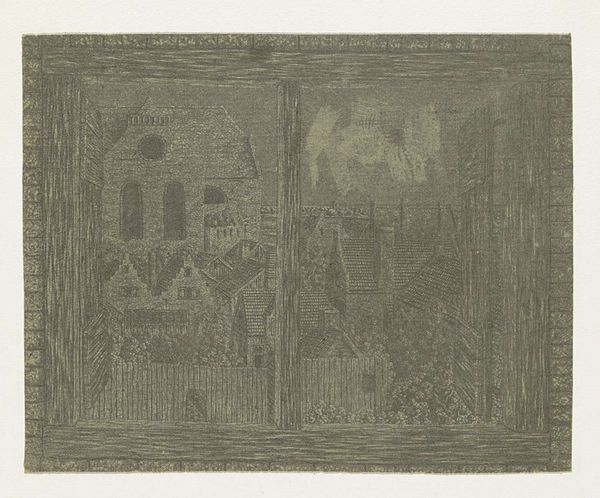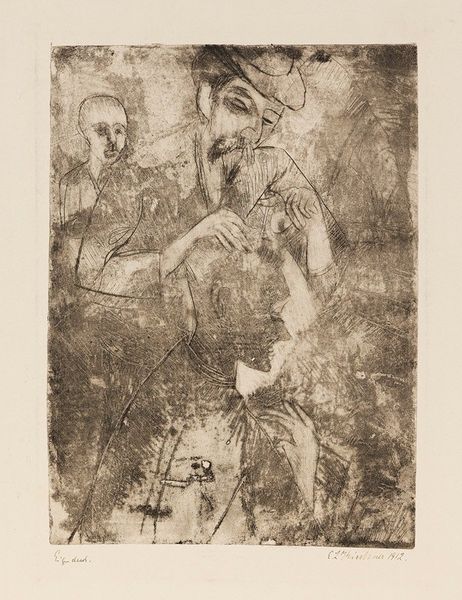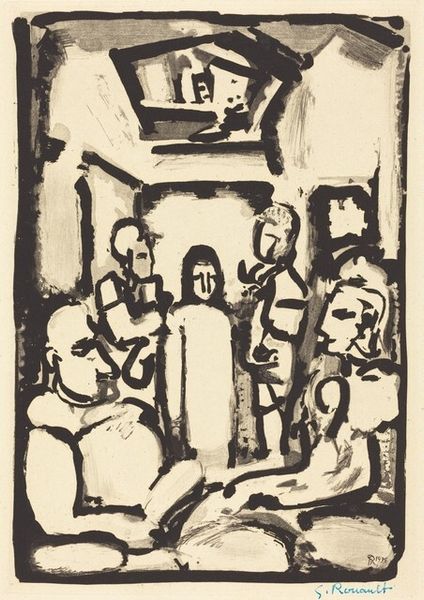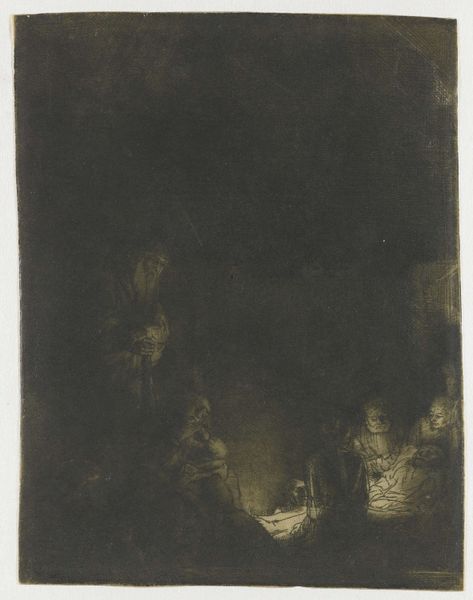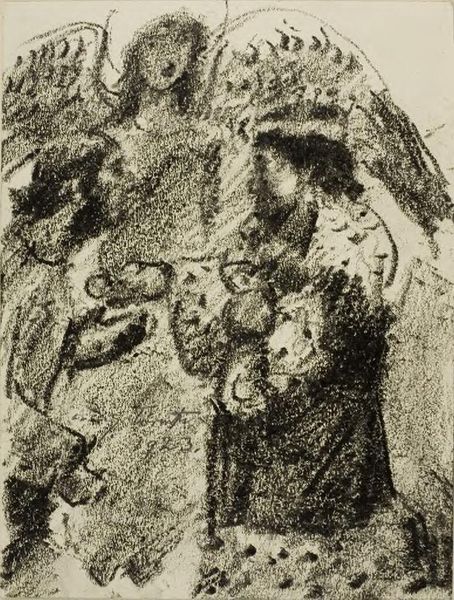
drawing, print, ink, charcoal
#
abstract-expressionism
#
drawing
#
narrative-art
#
ink painting
# print
#
charcoal drawing
#
figuration
#
social-realism
#
ink
#
charcoal
#
history-painting
Dimensions: sheet: 72.39 × 57.47 cm (28 1/2 × 22 5/8 in.)
Copyright: National Gallery of Art: CC0 1.0
Editor: So this is Mitchell Jamieson's "Search and Destroy! Vietnam—Plague Series" from 1970, made with ink and charcoal. It has a very somber feel to it. There's a group of figures clustered together, seemingly under some dark, looming presence. How do you interpret this work? Curator: Jamieson's work forces us to confront uncomfortable truths about power, conflict, and their devastating impact. The "Plague Series" title evokes disease, both physical and societal. The shadowy figure looming above is likely representative of American military might, and its obscured form emphasizes the faceless nature of oppressive forces. The huddled figures below could represent the Vietnamese populace, struggling against the devastation brought by war. How do you read their expressions and gestures? Editor: They seem resigned, almost defeated. It's as if they're seeking solace in each other's presence, but the environment itself seems oppressive. Curator: Precisely. And consider the artistic choices: the stark contrast of light and shadow, the almost brutal application of ink and charcoal. It mirrors the chaos and brutality of the Vietnam War itself, critiquing the very concept of "Search and Destroy" missions. It's an explicit challenge to sanitized portrayals of warfare. Where do you think this positions Jamieson's work in terms of its broader artistic context? Editor: It feels aligned with social realism, but maybe with an abstract-expressionist edge, reflecting the psychological impact of the war rather than just a documentary approach. Curator: Exactly. Jamieson is using the visual language of the time to create a powerful anti-war statement, deeply critical of American intervention and the devastating effects of colonialism. By acknowledging its context and impact, we allow artworks to be tools of resistance. Editor: I hadn't thought of it as explicitly colonialist before, but that makes so much sense given the historical moment. I’m walking away thinking about the layered political narrative of the piece. Curator: And that intersectional understanding—drawing connections between war, power, and representation—allows the work to speak to us even today.
Comments
No comments
Be the first to comment and join the conversation on the ultimate creative platform.

